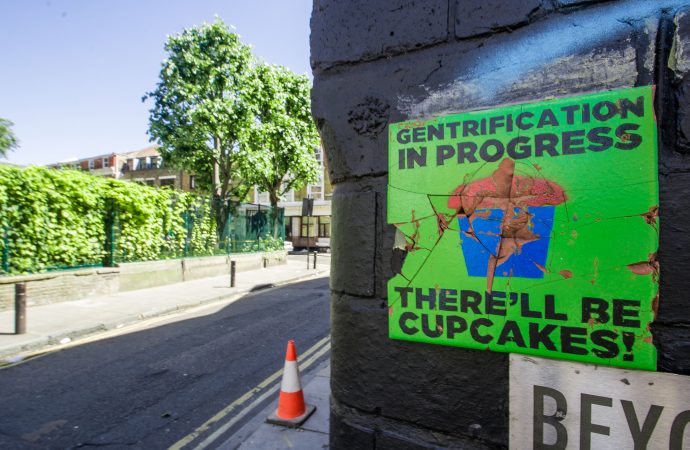When we think of differences in health quality in the United States, we often compare health by regions or by cities. But what about within cities? Can the health of the people living in the same city vary that widely?
Well, yes. In 2014, Virginia Commonwealth University investigated the differences in life expectancy by zip code in 21 U.S. cities and found that life expectancy differs as much as 20 years in cities like Philadelphia and Richmond, VA. If you’re at all familiar with any of these cities, it isn’t hard to separate the wealthy neighborhoods from the impoverished ones. While life expectancy is a useful indicator of a population’s health, the causes of this disparity need to be explored.
Perpetuating poverty in urban areas
It has been understood that health is significantly affected by social factors as well as biological ones, thanks to a World Health Organization commission to identify causes of health inequalities. These factors, including education, employment, race, gender, policies, and geographies, shape our ability to make healthy decisions and control our well-being. For example, despite best efforts to eat healthy food, a lack of local supermarkets and a prevalence of fast-food chains inhibits the ability for many Americans to make decisions on nutritious meals. A lack of public transportation limits an individual to schools and workplaces within walking distance. Poor water quality causes diseases to spread and infect a city’s residents. Social determinants of health such as these are often out of our control and can have serious implications for our health.
Gentrification, or the process of rebuilding poor neighborhoods for upper class residents to move in, displaces an area’s original residents when they are no longer able to afford increasing rents. Typically, gentrified neighborhoods change demographically and racial minorities are pushed out. Although gentrification brings better food options, improvements in infrastructure, and increased sanitation, the residents pushed out from these areas receive none of the benefits. When poor people of color are forced to move to other urban areas without stable infrastructure, the cycle of poverty is perpetuated in these communities. As this happens, the line of life expectancy between areas is drawn thicker.
Health: a matter of race and class
Research suggests that the difference in health outcomes within gentrified neighborhoods is separated by race and class; primarily, upper-class white residents have better health than poorer Blacks, according to one study. A component of this disparity is due to the lack of access to healthcare in low-income communities as a result of availability and affordability of care. However, the larger issue lies in the broader social factors that cause health disparities such as poor economics and discriminatory policies deep-seeded in a history of racism. These policies allow for gentrification to happen throughout cities and metropolitan areas and worsen the health of one population for the sake of another’s.
The phenomenon of gentrification is not new, nor is it likely to stop without a major shift in economic and social policies. To invest in poor communities requires a redistribution of resources and a commitment to education, jobs, and public health. It is possible to reduce the gap among life expectancies within cities with conscious effort and a commitment to quality healthcare.
The conversations around health and healthcare cannot end with medicine and science. We must consistently recognize the role of socioeconomic and political factors on our health and commit to making health more equitable for all.
 Katherine Milazzo is part of the Students for Social Justice. Students for Social Justice is a student group at Emory University’s Rollins School of Public Health committed to social justice and change within our personal, academic, and professional lives.
Katherine Milazzo is part of the Students for Social Justice. Students for Social Justice is a student group at Emory University’s Rollins School of Public Health committed to social justice and change within our personal, academic, and professional lives.
Write them at s4sjRollins@gmail.com.
Facebook page: https://www.facebook.com/S4SJRollins/
References:
Grant, B. (2003). What is Gentrification? In Flag Wars. American Documentary, Inc.
Commission on Social Determinants of Health (2008). Closing the gap in a generation: Health equity through action on the social determinants of health. World Health Organization.
Gibbons, J., & Barton, M. S. (2016). The Association of minority self-rated health with Black versus White gentrification. Journal of Urban Health: Bulletin of the New York Academy of Medicine, 93(6), 909–922. http://doi.org/10.1007/s11524-016-0087-0
Kennedy, M., & Leonard, P. (2001). Dealing with neighborhood change: A primer on gentrification and policy choices. Washington, DC: Brookings Institution.
Virginia Commonwealth University Center on Society and Health (2014). Mapping Life Expectancy. 12 November 2015.
Photo Credit: MsSaraKelly / Flickr





